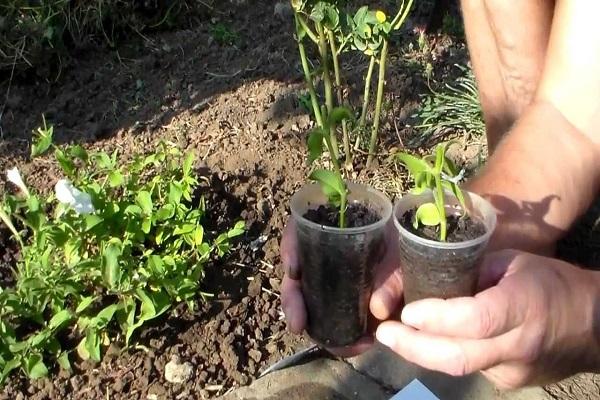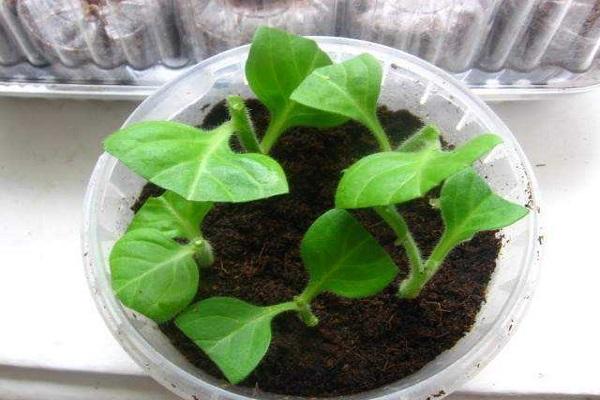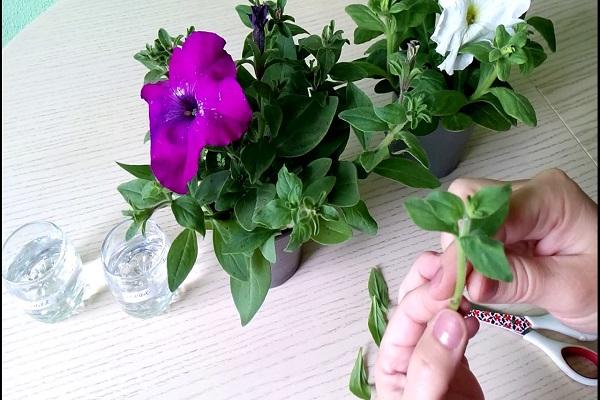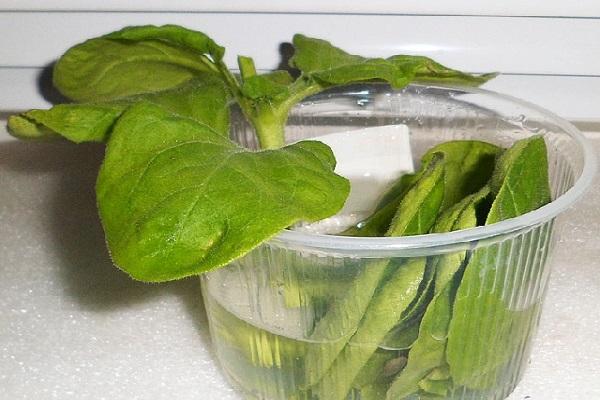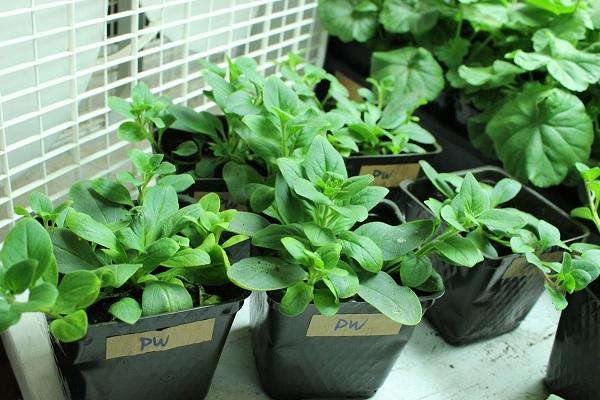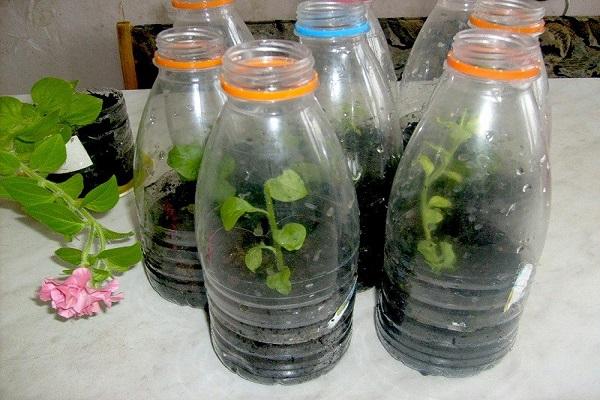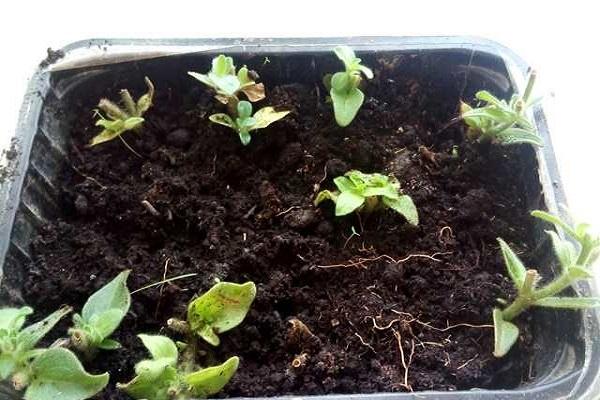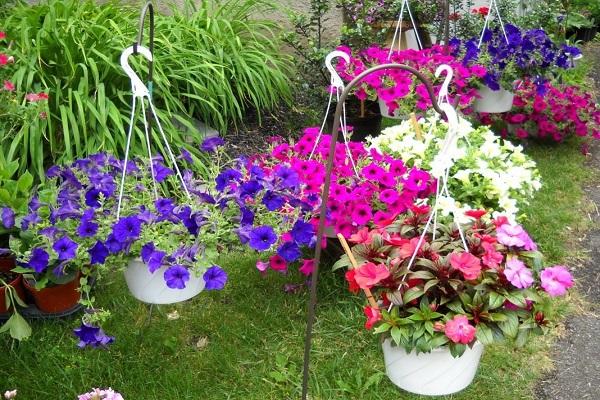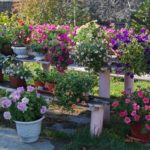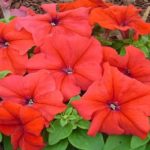Petunias are common in Russia. They are grown in summer cottages, balconies, and in pots on apartment windowsills. One of the most significant questions about growing petunia remains the question of preserving it for the winter; for this purpose, methods of replanting or cuttings are used.
- Advantages of growing from cuttings
- When is the best time to propagate petunia?
- Summer cuttings
- Is it possible to cut petunia in the fall?
- Winter cuttings
- What varieties are suitable for this?
- How to properly propagate petunia from cuttings
- In water
- In the ground
- What to do in case of errors
- What to do after the procedure
Advantages of growing from cuttings
Cuttings are a method of vegetative propagation of petunia, in which a cutting is separated from the mother bushes and rooted in water or soil. The advantage of this simple method lies in the complete preservation of the properties of an adult plant.
In addition to cuttings, petunias are propagated by seeds. This method is not very effective due to the inability to predict the landing result in advance. When planting seeds, it is impossible to influence the stages of seedling development.
Some petunias reproduce only vegetatively; these types include numerous double varieties. These varieties make up a significant part of the petunia collections collected by amateur gardeners around the world.
The advantages of cuttings are usually called several parameters:
- preservation of the characteristics of the genotype of the mother plant by cuttings from it;
- short rooting time compared to planting seeds;
- increased hardiness of the plant obtained from cuttings from the mother plant;
- monetary savings on seeds or seedlings.
When is the best time to propagate petunia?
Experts in the cultivation of flower crops consider one of the main advantages of the agrotechnical characteristics of petunia to be the ability to carry out cuttings at any time of the year. This allows you to propagate a diseased or damaged plant without waiting for the optimal time.
If there is no urgent need to engage in cuttings, then the period from February to May is chosen for it.
Summer cuttings
Growing petunias in summer has several advantages:
- availability of natural light due to increased daylight hours;
- optimal temperature conditions.
In summer, cuttings are used to produce plants that can bloom indoors in mid-autumn.
Is it possible to cut petunia in the fall?
Autumn pruning of petunia is carried out in order to preserve the plant for the winter and further breeding of the variety at home.
Faded petunias are pruned in September and early October:
- for bush forms, no more than 15 centimeters of the stem are left;
- in hanging types, approximately half of the stem is cut off.
The resulting cuttings are used for further rooting.
Winter cuttings
Winter cuttings begin in advance:
- Petunias are brought indoors for the winter.
- They are pruned: old and damaged leaves are removed. If necessary, prepare for transplantation.
- The queen cell is placed in a spacious flowerpot or pot on the windowsill.
- By February, the mother plant begins to be covered with fresh shoots; they are cut off for rooting.
- The cuttings are placed in water or soil until roots appear.
For petunia cuttings, take into account that the period from cutting to planting an independent plant in the ground should be approximately 1.5-2 months.
The result of following all the rules when breeding petunias is the appearance of roots with the water rooting method or the emergence of children with the soil method.
What varieties are suitable for this?
Vegetative propagation is suitable for all double and most hybrid varieties. Japanese breeders developed special hanging varieties. They reproduce only by cuttings. This helps to preserve and increase the obtained selection results.
How to properly propagate petunia from cuttings
Suitable for cuttings are plants grown for seedlings, as well as queen cells from last year's flower beds, transferred to the house for wintering. Cuttings are suitable for rooting in water, soil or peat tablets.
For successful rooting, several rules must be followed:
- compliance with temperature conditions;
- ensuring sufficient lighting;
- maintaining air humidity around the cuttings.
In water
The water propagation method has several advantages:
- rooting can be controlled by observing the stages when choosing a transparent container;
- the possibility of washing the cutting if rot has formed on it and reusing it.
To avoid infection, add an activated carbon tablet. The water level should not exceed 2.5 centimeters; this volume is maintained throughout the entire period. Water is added every time it evaporates.
The position of the handle is adjusted using a paper insert with a slot or a lid.
Advice! If there are several cuttings, then they are covered with a common film or placed in a bag.
In the ground
This method involves choosing the soil. The soil for petunia shoots is a source of nutrients. Soil for rooting is purchased in specialized stores or prepared at home. A drainage layer is placed at the bottom of the planting container, which may consist of small river stones or expanded clay. The pot is placed on a special tray, which will allow watering using a tray method.
The cut and dried material is planted in moist soil at an acute angle. The planting depth should not be more than 2 centimeters.
The earth around the cutting is compacted, then the container is covered with plastic film to ensure a greenhouse effect. The planting is placed away from direct sunlight.
What to do in case of errors
Despite the fact that petunia is considered the most suitable flower for cuttings, flower growers often make mistakes that hinder the growth and development of the shoot. The first sign of a problem is that the cutting does not take root.To understand the cause, it is necessary to evaluate the overall condition of the planting.
| Characteristic | Sign of an error | Prevention and elimination measures |
| Temperature | The appearance of condensation on the walls of the glass, the accumulation of moisture on the leaves of the shoot | Ventilate the plantings for 10-15 minutes daily, maintaining the optimal regime: it should not exceed +22 ° |
| Air humidity | Condensation builds up or leaves curl. The appearance of spots on the leaves | Regular ventilation, adding water during evaporation |
| The soil | Hard dry soil | Careful watering, systematic loosening of the soil around the cuttings |
| Watering conditions | Dry soil or too wet soil | Watering at the root or regularly replenishing water during evaporation |
| Location of processes | The shoot lies on the ground and has a stunted, sick appearance | Possible overflow, beginning of root rotting |
If the shoot does not take root in water and rot appears on the cut surface, then the procedure should be repeated. To do this, the shoot is removed, the cut is washed, and treated with activated carbon. The water is drained, then a fresh portion is poured with the addition of a manganese solution for disinfection.
If rotting begins on a cutting planted in the soil, then such a shoot cannot be saved. For propagation, fresh cuttings are used with additional processing of the cuts and the addition of a growth stimulator.
What to do after the procedure
Hybrid varieties of petunias are especially demanding in maintaining optimal conditions for rooting. The temperature for germination of cuttings should not be lower than +16.
Information! During the first weeks, active growth of the root system occurs, so changes in the development of the above-ground parts of the plants are invisible.
Covering the shoots with plastic film to create a greenhouse effect becomes unnecessary for 5-7 days.
Daylight hours for petunia should be 11-12 hours, therefore, if there is a lack of natural light, it is added artificially. For this, photo lamps are used: they are installed at a distance of 20 centimeters from the seedlings.
Morning or evening hours are suitable for watering. Settled water at room temperature is mixed with a few drops of lemon juice.
To grow cuttings, a feeding system is provided, this makes the cutting procedure more effective:
- For the first 2 weeks, the shoots are sprayed with water with the addition of a solution of potassium manganese.
- When the leaves appear, soil fertilizers begin to be applied to the soil.
- For water rooting, spraying with a growth stimulator is used.
Compliance with the rules and providing conditions for development contributes to the rapid and effective breeding of petunias.


